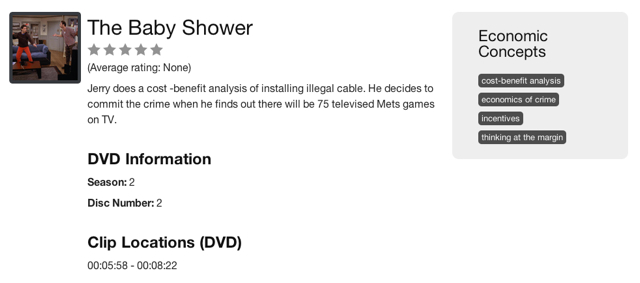

how Bing Crosby helped promote the purchase of war bonds for the US war effort during the Second World War.about Milton Friedman’s recommendation to the US government to introduce a tax to finance the US involvement in World War II.the benefits and difficulties of using social media platforms to teach economics.how video scrapbooking can be integrated into the economics curriculum.whether using Twitter to enhance the students’ learning outcomes is effective.In this interview, Darshak mentions: Abdullah Al-Bahrani, Kim Holder, Brendan Sheridan, Jadrian Wooten and Milton Friedman. In this interview, Darshak mentions: option value theory, pedagogy, decision-making, opportunity cost, logic, profit, the hazard model, entrepreneurship, economic growth and corruption. Shipping may be from multiple locations in the US or from the UK, depending on stock availability.0 Flares Twitter 0 Facebook 0 Filament.io 0 Flares × 071: Darshak Patel on Using Popular Culture to Engage Economics Students in the Classroom and Onlineĭarshak Patel is currently a Lecturer of economics at the University of Kentucky, USA.Īfter a one-year Visiting Assistant Professor appointment at Roanoke College, Darshak served three years as an Assistant Professor of Economics at the University of Tennessee, Martin.ĭarshak’s research and teaching interests include labor economics, microeconomics, industrial organization, the economics of education, and sports economics.ĭarshak graduated with a PhD in Economics at the University of Kentucky with his dissertation exploring the use of option value theory to explain student decision-making in post-secondary schooling. Each chapter in this book explores one or more key economic concepts typically and relates them to key scenes from the show. As the most successful sitcom of all time, the television series Seinfeld provides a rich environment for learning basic economic principles. It is an ideal supplement for all economics classes. Written in a light-hearted and conversational style, this book is a must read for fans of Seinfeld and anyone who wants to learn something from 'the show about nothing,'.

These principles are then applied to other real-world situations, arming readers with the tools needed to make better economic decisions. Those decisions are at the heart of economics. The major characters paint themselves as some of the most self-interested individuals in all of popular culture, and are faced with dilemmas that force them to make decisions. Chronicling the lives of four close friends - Jerry, George, Elaine, and Kramer - the show highlights human behavior at its best and its worst.



 0 kommentar(er)
0 kommentar(er)
